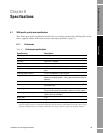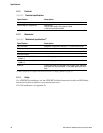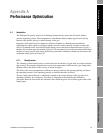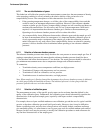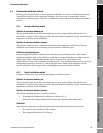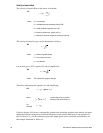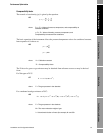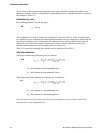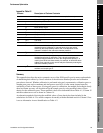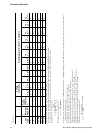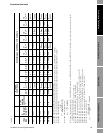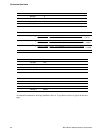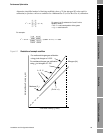
Installation and Configuration Manual 53
Performance Optimization
Principles of Operation Certified System DrawingsReturn PolicyPerformance Optimization
Legend for Table A1
Summary
This appendix describes the major systematic errors of the 3098 specific gravity meters and methods
of minimizing their effects by correct selection of the reference chamber pressure and calibration
procedure to be used. Whether calibration is performed using truly representative calibration gases or
whether pure gases such as methane and nitrogen are used will, to some extent, depend upon the
availability of each of those gases. If using pure gases for calibration, the method and example clearly
show how better accuracy can be achieved on the sample gases by using modified values of base
density for the calibration gases. These modified values are as determined from Table A-1, Column 15
and the resultant errors are as shown in Column 14.
An alternative method of deriving the modified values of base density has been included in the
calculations for Table A-2. Its results compares favourably with the tabulated result in Column 15 but
is not as informative in error identification as Table A-2.
Column Descripton of Column Contents
1 Gas type and use function - calibration or sample, for example
2 M Molecular weight of gas
3
γ Ratio of specific heats
4 Z Compressibility factor at base conditions
5
ρ
s
true
Base density of gas
6V
F
Velocity of sound factor
7 Z Compressibility factor at reference chamber pressure
8Z
F
Compressibility correction factor
9E
F
Total factor
10 Δ
F
% The value
11 E
1
Calculated total factor using calibration gases as reference
12
Δ
1
% The value which is the anticipated error which results from a simple
methane/nitrogen calibration. In general these errors are mainly
defined by the compressibility factors and in consequence will be
reduced in relation to the reference chamber pressure.
13 E
2
Calculated total factor using methane and sample gas as reference
14
Δ
2
% The value which is the anticipated error which results from a
methane/sample gas C calibration. This is directly equivalent to a
methane/nitrogen calibration in which the nitrogen base density Y’ is
used in place of the true base density, for example, an offset has been
added. Once again the errors can normally be reduced by reducing the
reference chamber pressure.
15
ρ
s
ind.
Values of which are anticipated in order to obtain zero error for
methane and sample gas C.



